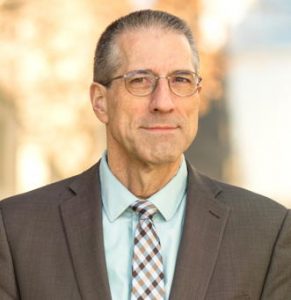REMINISCENCES OF MUSIC PAST: Symphony offers world premiere by promising newcomer
Composers have long delighted in creating elaborate narrative “programs” for their instrumental works, then instructing us not to rely on the programs too much, or even asking us to ignore them altogether. At issue is a tension over whether a piece conceived programmatically can also stand on its own as “pure” music. Avner Dorman’s new Piano Concerto No. 2, Lost Souls, stamps its narrative right into the score, with movements titled Séance, Twilight and Exorcism. At its world premiere November 20 at Kansas City’s Lyric Theatre, with the superb pianist Alon Goldstein and Michael Stern conducting the Kansas City Symphony, the 34-year-old composer even took to the stage beforehand to relate the narrative: A pianist is yanked from the afterlife to relive his past glory, and along with him come several other spirits, including the ghosts of “piano concertos of the past and pianists of the past,” in the composer’s words. One of the spirits is so malevolent that must be exorcised. Nevertheless, the composer emphasized, this narrative is just his version, and we were each welcome to create our own, or indeed listen with no story in mind.
Commissioned for Goldstein and the Symphony, the concerto is a playful 30-minute explosion of sound, color and rhythm, with a theatrical flair. At the beginning, the audience was surprised to see Stern take to the stage alone, mounting the podium with a puzzled shrug toward the empty piano bench. After a few minutes of high, spooky string clusters, the hall faded to black while the orchestra vamped; when the lights went up, presto, there was the “conjured” Goldstein at the piano. His music was initially chaotic, as if he’d had a rough ride in from the afterlife. But then he rushed into a tumble of subtle, half-hidden allusions to other music, with driving rhythms and ferocious passagework. Goldstein negotiated the solo part with muscular, hyperactive command. In addition to Ravel, Messiaen and Gershwin we couldn’t help thinking of the virtuosic jazz of Art Tatum, Oscar Peterson, even Keith Jarrett. Piquant rhythms and the frequent reference to the augmented second lent a vaguely Middle Eastern flavor — the Israeli-born composer is an avowed fan of Arab music — while the skillful use of forces assured that the orchestra remained an equal partner. The battery of standard and exotic percussion instruments kept four players in constant motion, while the clangor of all manner of metallic instruments lent a ceremonial air.
In Twilight the pianist was allowed his moment in the spotlight, performing a little “recital” that sounded like deconstructed Baroque music, with lackadaisical scales that meandered around the upper register — all to a tinkling, delicately colored percussion accompaniment. The entrance of the demonic spirit revived the pianist’s ferocious mood, and this time he cascaded crazily about the keys like Stravinsky’s Petrushka on a tear. The segue into the finale was the only part of the concerto that seemed overly long. Exorcism sent the percussionists back to an array of drums and timpani, including the djembe and the Cuban Batá (the latter often used, significantly perhaps, in santería rituals). A headlong toccata of complex, irregular rhythms for the whole orchestra was interrupted by a series of stentorian brass expletives announcing the exorcism of the bad spirit. The pianist’s spirit took its leave in lacy filigree at the top of the keyboard, which was reduced to four keys, then three, then two, then a single key. Fade to black, and the pianist again vanished.
In the foyer at intermission, audience members were abuzz with opinions; the word I overheard most was “fun.” Lost Souls is indeed a lively, extroverted, skillful, aurally attractive and highly entertaining concerto. Perhaps that is enough to ask from any piece of new music. Yet what was unclear from a first hearing was whether the piece could exist apart from its narrative, or stripped bare of theatrical tricks that stopped just barely short of gimmickry. From a purely musical point of view the concerto felt discursive and episodic, even though its structure was ostensibly strict (the first movement is virtually a sonata form, complete with lyrical second theme). But beyond the fun I didn’t feel strongly compelled to hear the concerto again, at least not on a regular basis.
The concert had opened with an affectionate rendering of Bartók’s Hungarian Sketches, which showed to fine advantage the ensemble’s ever-changing wind section (including the extroverted new principal oboe Mingjia Liu). They were even more impressive in Sibelius’ Symphony No. 2, which formed the concert’s second half. The strings smoldered nicely in at the opening but were upstaged by the winds throughout, which sounded about as substantial and balanced in this Allegretto as I’ve heard them. Despite some pitch issues in the double bass pizzicatos that open the Andante, the Vivacissimo was showily enigmatic. Yet here as in the finale, everything felt as if it were in the right place but a sense of personality or creative shaping remained incomplete.
To reach Paul Horsley, performing arts editor, send email to phorsley@sbcglobal.net.





